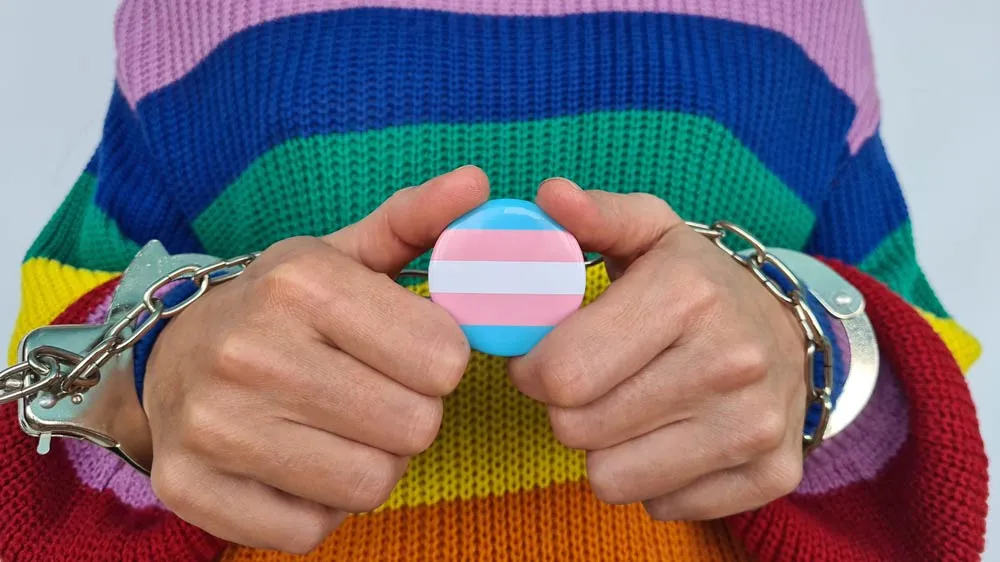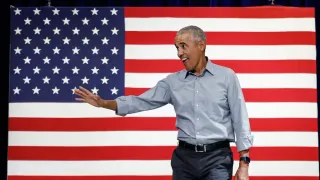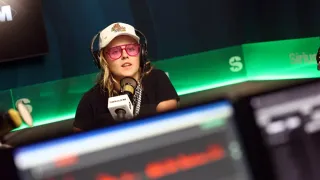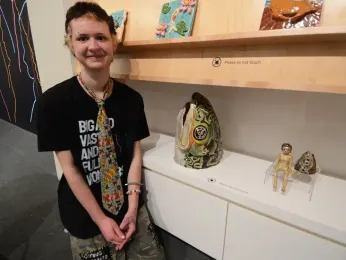
Jun 25
San Francisco high school allows LGBTQ students to excel
Matthew S. Bajko READ TIME: 5 MIN.
Overwhelmed by the rigidity of attending a traditional high school, where students take classes based by topic and taught by different teachers, as well as feeling a lot of social stress, Amaranta Korngold transferred into Independence High School last fall for their senior year.
The small, alternative high school in the San Francisco Unified School District had fewer than 270 students from across the city during the 2024-2025 academic year. For Korngold, the nontraditional educational environment allowed them to thrive and easily connect with their classmates. Rather than feeling paralyzed in the morning and dreading heading off to high school, they felt excited to get to their classes at Independence.
“This year, I made friends as fast as I did in elementary school. I wasn’t stressed to go to school anymore,” said Korngold, 18, who is queer, nonbinary, bisexual, and genderqueer.
Also a Hawk, as that is the high school’s mascot, until graduating earlier this month was Jake Cookston, 17, who transferred to Independence as a sophomore. Post the online learning of the COVID years during middle school, he felt very anxious being in his classes at his former high school and its far larger student body.
Cookston, who came out as transgender at 13 in the eighth grade, also wasn’t meeting many other queer and trans students. He felt unsupported by his teachers when they didn’t discipline other students who ranted in class about using people’s preferred pronouns.
At home, his parents and siblings were supportive, but he was stressed by the decline of a grandfather in Texas who was in hospice care and passed away a few years ago. He began to skip his classes and, one day, decided to search online for a “not so traditionally structured high school,” recalled Cookston. “Independence came up.”
He applied and was accepted. Immediately, Cookston took note that students at Independence said what their pronouns were when introducing themselves and that its restrooms are all gender. The focus on project-based learning and limited classroom time suited his mindset, plus it afforded him time to focus on making art in the afternoons.
“You can make your own schedule. They work with you on a personal basis,” said Cookston.
Long attracted LGBTQ students
Founded 45 years ago and, for the past 12 years, located in the city’s Inner Sunset neighborhood, Independence has long attracted LGBTQ students, school staff and students told the Bay Area Reporter. Korngold said they certainly found it to be true, noting both of their teachers were also queer, which was a first for them at school and nice for them to see as a queer, young person.
“It is a more alternative place, so a lot of queer people go here,” Korngold told the B.A.R. in the spring, pointing out they had just had a history presentation at school about the hanky code used by gay men and others decades ago to signal their sexual proclivities based on the colored handkerchief stuffed into the back pocket of their jeans. “Our school is open to our identities. I feel kind of normal, which is kind of a relief.”
Dre Collaco, a licensed social worker who has been the high school’s wellness coordinator for 12 years, said, “Historically, this school was always a safe haven for queer and trans students.”
At the school’s Wellness Center LGBTQ students can find support and resources. It collaborates with LYRIC, the LGBTQ-youth focused nonprofit based in the city’s LGBTQ Castro district, to offer health education workshops and facilitate an LGBTQ affinity space known as Q Group, along with the nonprofits Huckleberry Youth and Health Initiatives for Youth.
“When you walk in here, you feel it is a safe space,” said Collaco, 54, a queer San Francisco native. “When you see the Pride flags, staff members or other queer kids, you are like, ‘OK, this is a space where I can be me.’ There are less kids and less bullying. When it does happen, we can nip it in the bud and provide support for both students.”
A frequent Q Group attendee was Cookston. During their time at Independence, he spent many hours at the Wellness Center.
“It was nice having that small group and safe space to talk about stuff,” said Cookston.
The school doesn’t have full stats on its LGBTQ student makeup. It does know that 30 students, or 11% of the student body, this academic year were either transgender or nonbinary. According to school officials, 22 students also identified as gender-nonconforming.
“A lot of kids come to us with negative experiences at their prior schools, and scholastically, I think we are really thoughtful about how we show up for them,” said Anna Klafter, Independence’s principal for nine years, as she gave the B.A.R. a tour of the school site this spring. “When they first come here, we ask what are their pronouns. We have a form for an informal name change if they are using a different name than their government issued one.”
Many students who transfer to Independence do so, noted Klafter, because they didn’t find a peer group they related to at their previous schools, or they didn’t fit into a more rigid academic structure.
“All of our kids are here for a reason,” noted Klafter. “Most were not able to get what they needed at their last school. It is not to say the other schools weren’t doing their job, it is just that the needs of kids have grown more complicated over the last 10 years, I would say.”
The school’s classrooms eschew the traditional setup of desks with chairs in rows and more resemble lounge spaces. The lighting in many rooms is kept dim and there are no bells ringing between classes to take into consideration the sensory needs of students.
“This school is very student centric. We do focus groups with them; they are stakeholders and make decisions around our programming,” said Collaco.
Of the 26 fulltime staff at Independence this academic year, 11 were teachers, three social workers, and two counselors. The school isn’t meant to have a large student body.
“Our model is smaller and more laid back. It is an accommodation our kids need that they didn’t know they needed,” said Klafter, a San Francisco native who worked as a DJ and music journalist for a decade before entering the teaching profession.
Independence offers an “independent study” model of school learning. Some students meet individually with a teacher for an hour a week and are given assignments to complete before their next meeting.
Others opt for the Cohort Program, where they are grouped together with a small subsection of their classmates, no more than a dozen, to take classes together and work on projects for assignments that encapsulate lessons from myriad academic disciplines. It is what both Korngold and Cookston opted for as Independence students.
“It is like a choose your own adventure book,” explained Korngold, whose senior year project focused on their interest in anthropology.
Their older brother had briefly attended Independence, and it was common for students at their previous high school to transfer to it. Korngold credited not only its unique academic structure but also the stability in the staff there as helping them to succeed.
“I’ve been in public schools since I was 5 and I didn’t have consistent principals. I had a different administration almost every year, which is not great for a school site,” said Korngold. “At Independence, the principal was the longest-serving I have ever had since first grade.”
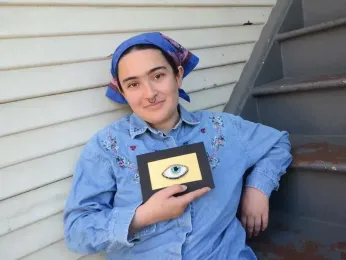
Overcoming challenges
Korngold overcame a series of challenges on their way to becoming a high school graduate. They missed their sophomore year due to mental health issues.
Earlier in their teens, Korngold’s obsessive-compulsive disorder was so severe that they were unable to verbalize for four months. Not only had their brain instructed them to not speak, but Korngold’s OCD prevented them from being in the same room with their mother.
“OCD usually attaches itself to things we love the most. I loved at the time being near my mom, and my OCD told me she was dirty and gross,” recalled Korngold, who ended up in several residential programs, one in New England and the other the Midwest, to seek help.
At age 13, Korngold was also coming out to themselves as queer and struggling with their gender identity. It was a therapist they saw to address an eating disorder that first suggested Korngold could be nonbinary.
“I think I am OK. I have done a lot of work to be OK,” said Korngold, crediting the support they received from their parents in helping them meet their struggles head on. “I am proud of myself for where I have gotten to and that is just being alive.”
They credit their teachers and staff at Independence for helping them not only to thrive in their senior year but also for their being accepted at several of the top campuses in the state’s university system. Korngold doubts they would have otherwise gotten in.
“I needed something different and that wasn’t so overwhelming and exhausting. It worked out really well for me, and I am having a good time, too,” Korngold told the B.A.R. in the spring.
At the time, they were at work on their end-of-year school project, which entailed making a beaded amulet. Inspired by reading a book that referenced people believing in an evil eye and needing protection against it, Korngold noted beadwork has long been a common practice across cultures, and an example of skills and knowledge being passed down from one generation to the next.
“You can learn all this info in such a small package,” marveled Korngold. “Beads are tied to identity and a place but have traveled all over the world.”
Tying beads back to anthropology, Korngold noted the central role the decorative objects have played in commerce and contact between early civilizations, factored into colonialism, and today are part of fashion trends. They have been “adopted and readopted,” they added, throughout time by cultures around the globe.
Their project also symbolized their parachuting into a new school where most of their classmates had gotten to know each other for at least three years. It reflected their initial concerns about fitting into their new school’s culture and environment.
“The whole theme of the year was how do I belong as a part of the whole,” explained Korngold. “A bead is part of a larger piece and, when not, a tiny thing on its own. You use it to create beautiful things.”
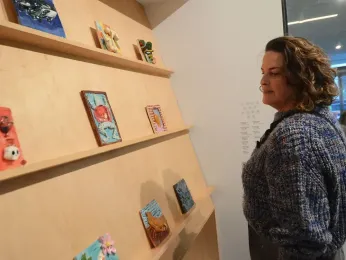
Ocean-inspired mural
Aquatic themes played a large role during Cookston’s final months of high school. His big project was painting an ocean-inspired mural featuring whales on the wall of one of the stairwells at school.
A highlight of his school year the past three years was the special daytrip he took to the Fitzgerald Marine Reserve in Moss Beach along the San Mateo County coast. There, he and his classmates helped count the sea creatures in the tide pools.
“We get to go into areas the public isn’t allowed to go and poke at things,” said Cookston.
This spring, Cookston was accepted into a special art exhibit for local students presented each year at the San Francisco Museum of Modern Art; it debuted in May inside the Steps Coffee on the second-floor check-in area and is to remain through the end of the summer. Two of Cookston’s three ceramic pieces were fish-inspired, with one being a large fish head. Their titles – one is labeled “Coming out- Molting” and the other “Appearances can be deceiving” – harken to Cookston’s personal experiences of coming out.
“I have a weird fascination about salmon,” Cookston acknowledged. “They totally change and become different in molting season. It is a metaphor for transition.”
In early June, on a typically overcast, cold day, Independence held its 2025 graduation ceremony at the Bandshell in Golden Gate Park. Phil Kim, a gay man who is president of the school board, attended and officially accepted the graduating class.
Teacher Peter Hippard, who joked he was also part of the class of 2025 due to his retirement from the school district, addressed the seniors and reminded them they “get to say with pride” that they earned their high school diploma from Independence. He also alluded to the topsy-turvy school year that saw the appointment of a new superintendent in the fall, abandonment of plans to shutter school sites, and a rough budget battle due to declining enrollment and shrinking funding from the state.
Hippard compared the 2024-2025 academic year to an amusement park ride “that feels like the theme park forgot to make the necessary safety checks.” For many LGBTQ students, the past six months also brought anxiety from the Trump administration’s attacks on pro-equality school policies, especially those supportive of trans and nonbinary students.
Korngold and Cookston both told the B.A.R. they largely ignored what was happening at the federal level and focused more on completing their senior year. Nonetheless, they couldn’t completely tune out the federal rollback on LGBTQ rights.
Due to having an X marker on their passport, Korngold had worried what that could mean for them when they traveled, due to a White House directive that the federal government only recognizes male or female on government IDs, but this month was able to fly to Mexico for a trip post their graduation ceremony.
“It shouldn’t be a concern to a country with all these individuals in it what a teenager identifies as, especially since I am law-abiding,” contended Korngold, who has dual citizenship in both the U.S. and Mexico, where they were born in San Luis Potosi.
(Their mother is from Mexico, while their father was born in California. With their parents now divorced, Korngold splits their time between their mom’s home in the Bayview neighborhood and their dad’s apartment in Bernal Heights.)
Life after high school
One reason Cookston, who lives in the Outer Sunset, applied to colleges in-state was concern over being denied the gender-affirming health care he has been receiving. He also wanted to make sure the campus he attended would be “socially safe” for him as a trans student.
“I know I am in a safe place and that is why I am staying,” said Cookston, who wrote about both being trans and losing a grandparent in several of his college application essays when prompted to discuss how he overcame his biggest struggle.
Both Cookston and Korngold were accepted to California State Polytechnic University, Humboldt and seriously considered enrolling at the Northern California campus. But they encountered issues in securing housing should they do so, which factored into their final decisions on where to go to college.
Cookston, who is looking at becoming a marine biologist, opted to attend the private, Jesuit-run University of San Francisco. A big factor in his decision was wanting “to stay local,” explained Cookston, whose sister attends USF and their mom works on its administrative staff.
“I am excited,” Cookston told the B.A.R., adding that it was a relief “not to have to think about it anymore.”
Initially on the waitlist, Korngold is headed to UC Santa Cruz, where they will study anthropology. It was their top choice and a “full circle” moment for their family, as an aunt had received a full ride at the university but wasn’t able to attend.
Having experienced their various personal and academic hurdles throughout high school, Korngold said it was “such a relief” to earn their diploma and graduate.
“I was very proud of myself and a little stressed out. It was also a little uncomfortable wearing so much polyester,” noted Korngold about the robe they wore for the ceremony. “I felt good once it was over.”
One thing they will carry forward with them that their two teachers at Independence instilled in them, said Korngold, is “doing things you are passionate about is important.”
